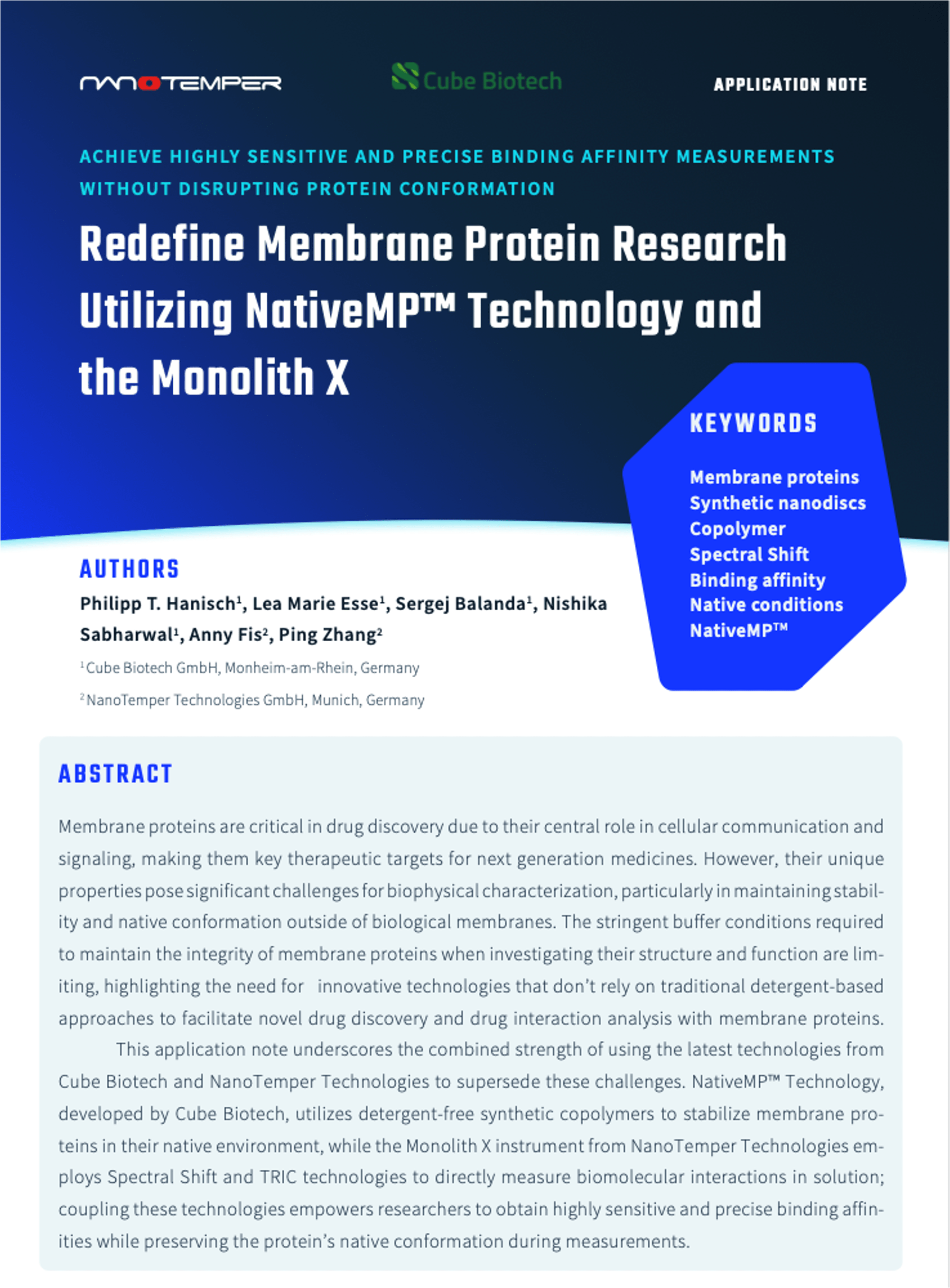Clemens Entzian and Thomas Schubert
Methods
2016 vol: 97 pp: 27-34 doi: 10.1016/j.ymeth.2015.08.023
Abstract
Aptamers are potent and versatile binding molecules recognizing various classes of target molecules. Even challenging targets such as small molecules can be identified and bound by aptamers. Studying the interaction between aptamers and drugs, antibiotics or metabolites in detail is however difficult due to the lack of sophisticated analysis methods. Basic binding parameters of these small molecule-aptamer interactions such as binding affinity, stoichiometry and thermodynamics are elaborately to access using the state of the art technologies. The innovative MicroScale Thermophoresis (MST) is a novel, rapid and precise method to characterize these small molecule-aptamer interactions in solution at microliter scale. The technology is based on the movement of molecules through temperature gradients, a physical effect referred to as thermophoresis. The thermophoretic movement of a molecule depends – besides on its size – on charge and hydration shell. Upon the interaction of a small molecule and an aptamer, at least one of these parameters is altered, leading to a change in the movement behavior, which can be used to quantify molecular interactions independent of the size of the target molecule. The MST offers free choice of buffers, even measurements in complex bioliquids are possible. The dynamic affinity range covers the pM to mM range and is therefore perfectly suited to analyze small molecule-aptamer interactions. This section describes a protocol how quantitative binding parameters for aptamer-small molecule interactions can be obtained by MST. This is demonstrated by mapping down the binding site of the well-known ATP aptamer DH25.42 to a specific region at the adenine of the ATP molecule.
Topics: Small molecule–aptamer interactions, Binding parameters, Monolith – MicroScale Thermophoresis, MST, Proteins, Publications











